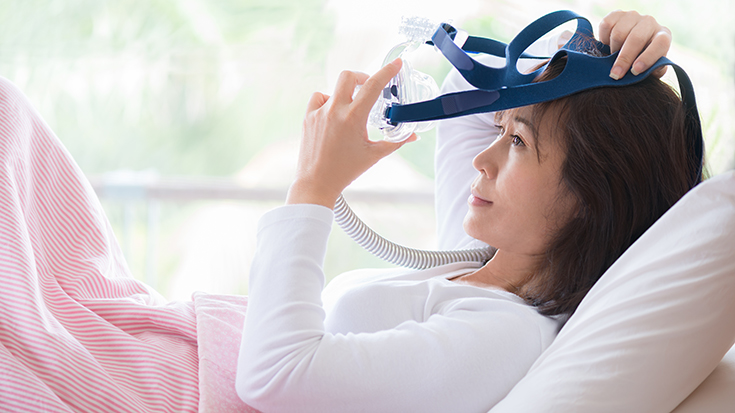
For most of history, no one thought of sleep as a medical issue that might need treatment. But just as things can go wrong with breathing, we all now know things can go wrong with sleep as well.
That’s where sleep medicine comes in.
Respiratory therapists have been a part of this specialty since it began in earnest in the last half of the last century and they are integral to the field today. In this interview, AARC Sleep Section Chair Jessica Schweller, MS, APRN-CNP, RRT, RRT-SDS, explains what’s involved in making the transition from traditional RT to sleep therapist.
How would you describe the sleep specialty to RTs who have never worked in the area?
When one thinks of sleep medicine, most therapists think we only work at night and in a sleep lab. Sleep medicine incorporates more than just CPAP machines as well. Therapists who work in sleep have the opportunity to not only work in a sleep lab, but can work in outpatient clinics assisting physicians in diagnosing and treating sleep disorders as clinical liaisons.
What are the educational, credentialing, and experience requirements for making the move to sleep?
Making a move to sleep medicine can be easy for any therapist who is interested. Experience is necessary before taking any credentialing exams, and the NBRC offers a credentialing exam specifically for sleep disorders, the RRT-SDS. Preparation for this examination may include additional education through a certified sleep technology educational program as well as on the job shadowing and clinical precepting in an accredited sleep disorders center.
How does working with patients in a sleep center differ from practicing traditional respiratory care in a hospital setting?
Working in a sleep center can be significantly different for an RT that is used to acute care hospital settings. Our patient population is generally well, for the most part, so the acuity and urgency is low. The sleep lab is usually a slower paced environment at night than an ICU, so it works out well for therapists who are looking for something different than the high stakes of acute care. Also, the equipment that we use for inpatient use is very different than what we use in the outpatient setting. There is more variety, and options are greater, and the machines are smaller and more portable. While the inpatient therapists are learning all about new ventilators and modes, we are keeping up with new mask options and PAP technology.
What opportunities for career advancement does the sleep specialty offer?
Because sleep medicine is a growing field, therapists who have an interest in working in sleep have many opportunities for advancement. Many therapists go on to work in management in sleep disorder centers and as physician extenders in clinical settings. Therapists will have the opportunity to become leaders in sleep medicine and education as well.
What are the biggest challenges and the biggest rewards of working in this specialty and why?
One of the biggest challenges we face in sleep medicine is non-adherence to therapy. As patients struggle to find comfort in the therapies we prescribe, we feel as though we have failed as clinicians to provide the best care for our patients and to do no harm. Keeping up with all the new technology can be rewarding and difficult at times as well, but you have to be in the know in order to provide the best options for your patients.
I see the biggest reward in sleep medicine coming from the value you provide to your patients. They see true, subjective improvement in their quality of life and you can truly make a significant impact on the lives of a whole family. I’ve seen relationships saved because of what we do in the sleep clinic.
What are the top 3-4 things you think an RT should consider before making the move into sleep and why?
- A therapist should have a curiosity for sleep disorders beyond the airway. I think sometimes we focus so much on the respiratory side of things that we forget that sleep involves a lot more as well and can be fascinating when you really get down to the parasomnias and such.
- Learn as much as you can from the vendors when it comes to the machines and masks we use in the outpatient world. Our equipment is different than what you see from the inpatient side and you’d be surprised at the comfort and portability.
- If you have the opportunity to shadow in the sleep clinic and lab, do it. If you can try a sleep study, do it. Borrow a CPAP machine and try it out. The more you are comfortable with the tools and therapies you are using for your patients, the better sleep clinician you will become.
You can learn more about the RT’s role in sleep by joining the AARC’s Sleep Section. Visit the Sleep Disorders Specialty page on the NBRC website to find out how you can earn the RRT-SDS credential.





